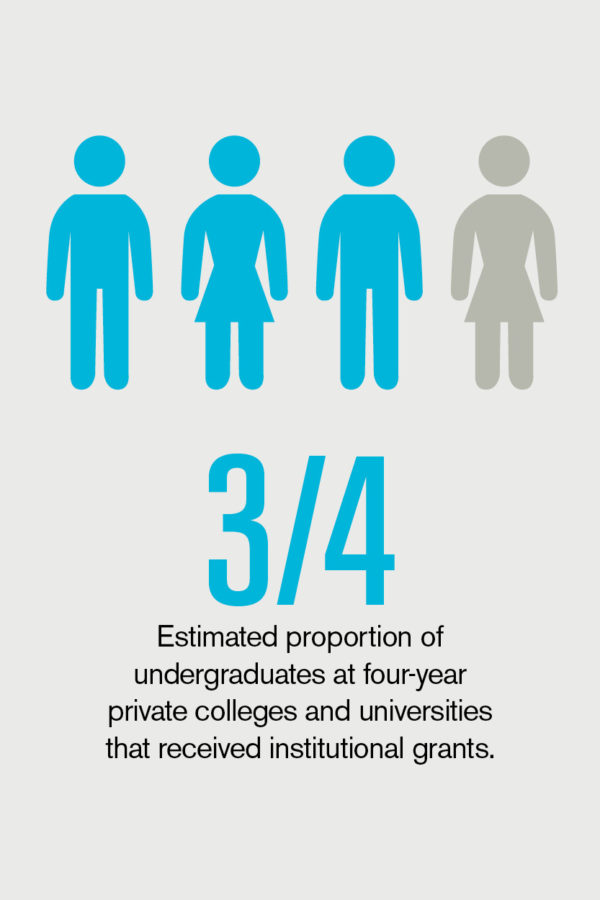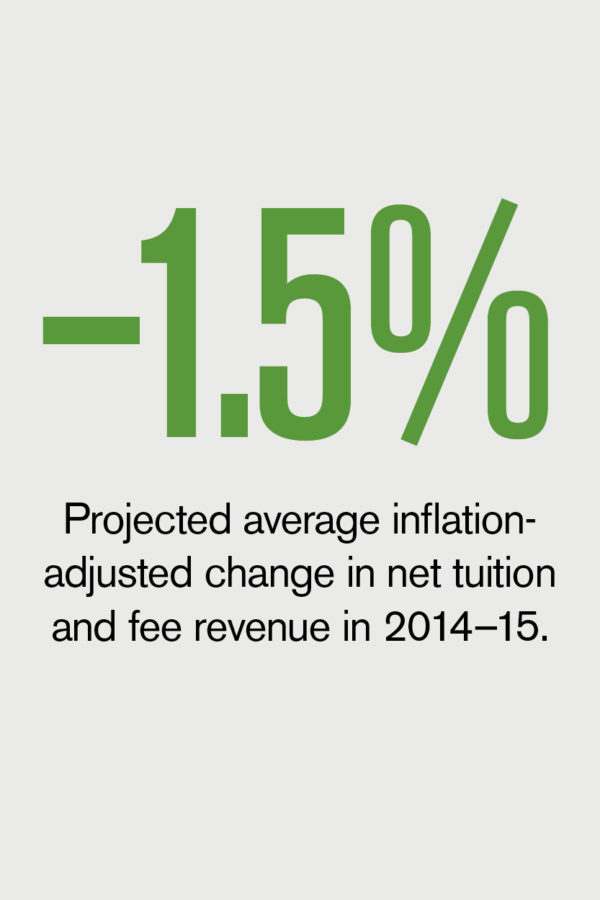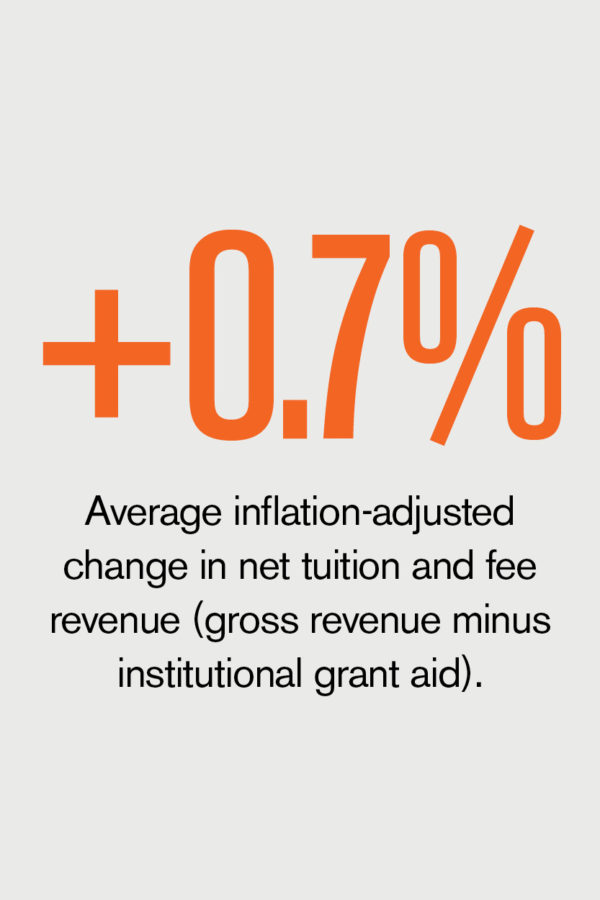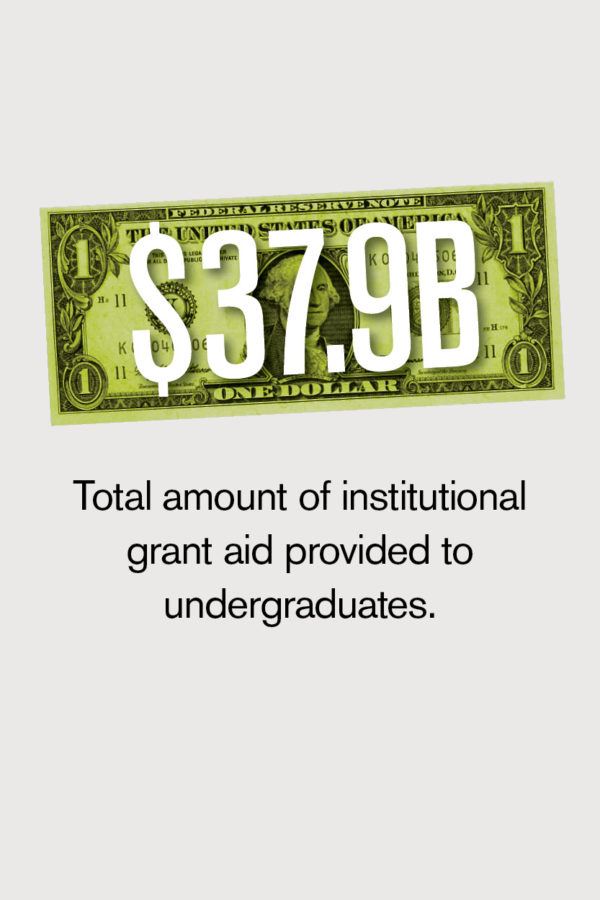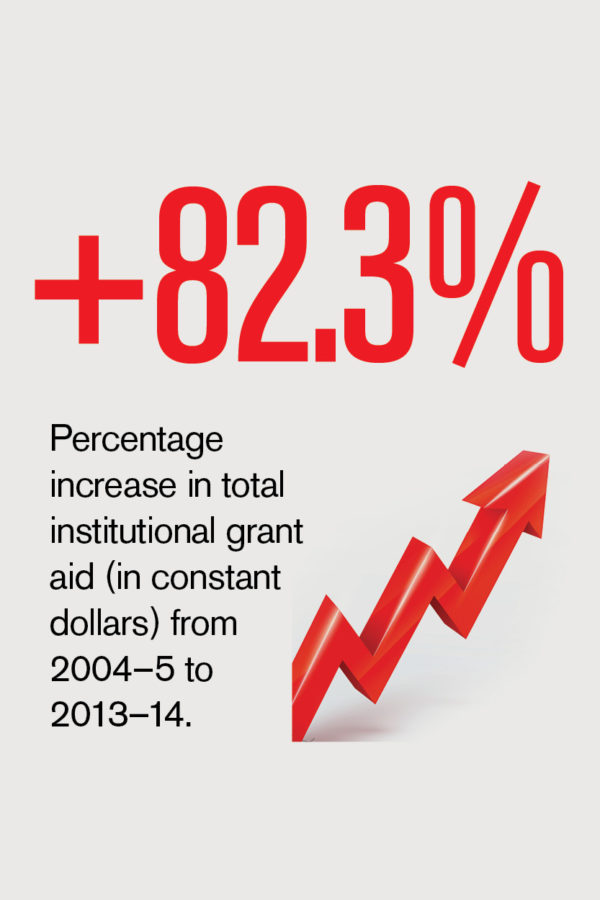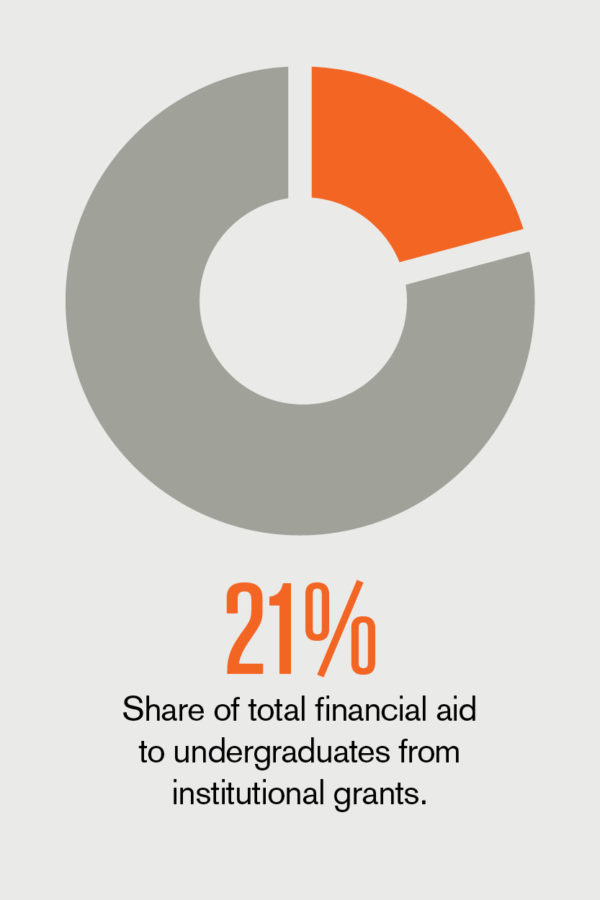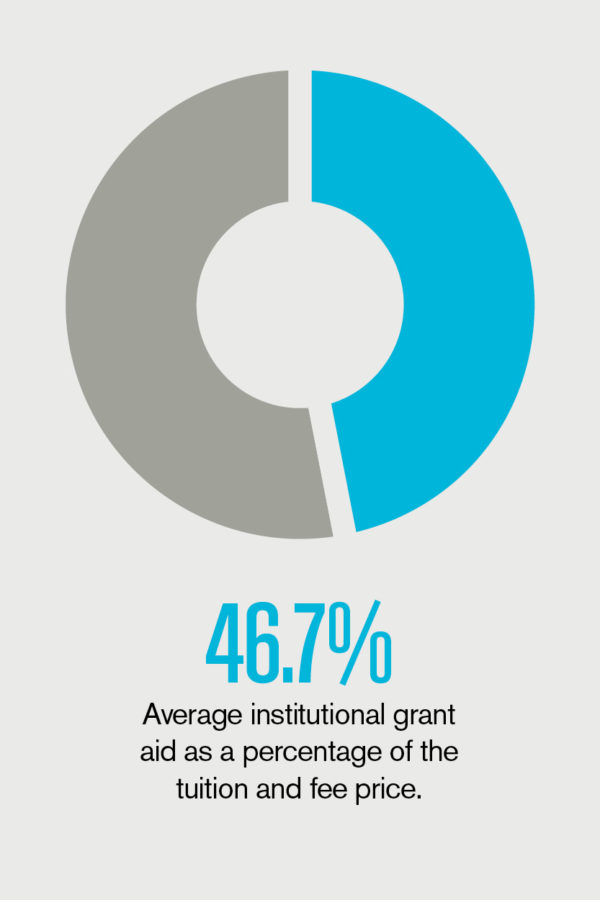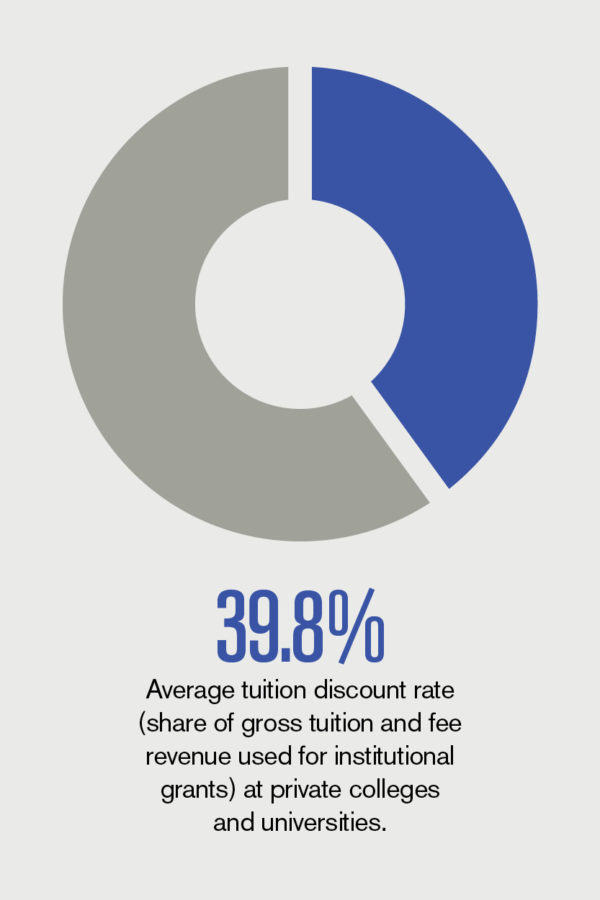In the session “The Higher Education Ecosystem and the Local Economy,” at the NACUBO 2015 Annual Meeting in Nashville, three institution leaders discussed innovative approaches to help students gain jobs while boosting the local economy.
“It’s not tax incentives or the cost of doing business, but the availability of a skilled workforce that is the biggest attraction for a company to move to a certain area,” said Larry Ferguson, vice chancellor of economic development and workforce solutions, Kentucky Community and Technical College System. The largest provider of higher education in Kentucky, KCTCS is also the primary provider of workforce development education in the state. The institution plays a major role in the state’s economic development, ensuring that companies conducting business there have the required skilled workforce.
In order to achieve this, KCTCS has built strategic relationships with constituents such as chambers of commerce, workforce investment boards, regional planning commissions, local governments, economic development organizations, and more.
Along with three other partner organizations, KCTCS has created the Kentucky Skills Network that allows a company interested in setting up a business in the state to start with a single point of contact, making it an easy and seamless process. The network also assists businesses in recruiting top talent, training new and existing employees, and developing a solid workforce.
Rolando Montoya, provost and chief operating officer at Miami Dade College, Miami, shared similar strategies with regard to neighborhood revitalization, workforce development, entrepreneurship promotion, and extensive support services for student success. The college, which enrolls 160,000 students, 70 percent of whom are from lower-income families, has an annual impact of $2.7 billion on the local economy.
In the Nashville area, where health care is the top industry, Vanderbilt University’s Center for Technology Transfer and Commercialization has formed a partnership with the Nashville Entrepreneur Center, that has greatly helped in starting businesses and creating jobs in the area, said Brett Sweet, CFO, Vanderbilt University.
SUBMITTED BY Preeti Vasishtha, deputy editor, Business Officer
The joint APPA–NACUBO Key Facilities Metrics Survey provides a valuable snapshot, year over year, of campuswide energy and water consumption.
Amassing more than five billion square feet of built space, the nation’s higher education sector annually spends more than $6 billion on utilities and approximately $14 billion on facilities operations and maintenance. Outside of salaries and benefits, these utility and operational costs typically represent the second largest budgetary expense to a campus. Facilities-related expenditures span a multitude of concerns—from condition and cleanliness, to safety and regulatory compliance, to costs associated with ensuring adequate custodial, grounds, and maintenance personnel for care and upkeep. A subset of these concerns encompasses sustainability-related impacts related to resource consumption and waste streams.
While energy and utility costs are top of mind for facilities staff and business officers alike, many primary decision makers may not know offhand their campuswide energy and water use in quantifiable terms. Keeping a handful of key metrics in mind can assist with improving the planning and execution of capital projects in ways that can reduce overall resource consumption and waste. These same broad measures can likewise be helpful for the general employee and student populations as they consider how their actions can positively influence campus resource use.
Broad Strokes
Launched in a joint effort with APPA in 2014, the Key Facilities Metrics Survey—initiated by NACUBO’s Sustainability Advisory Panel—targets five sustainability-related metrics: BTU, kilowatt-hour, water consumption, waste, and greenhouse gas emissions. Identifying specific data points such as annual median energy use per square foot, or daily water use in gallons per FTE student enrolled, will allow finance and facilities leaders to plan and operate the campus more efficiently. Since the best way to quantify energy and water consumption will vary by institution, the survey reports raw data by gross square foot and by student FTE. In their reporting, each campus may choose the most appropriate ratio depending on campus composition and ease of ongoing tracking and assessment.
“The survey is an attempt to streamline and simplify measures so that they are more likely to be remembered and recalled as leaders execute planning or budgeting of capital projects,” says Sally Grans Korsh, NACUBO’s director of facilities management and environmental policy. “By placing some of the metrics in per-student ratios, these may become not only more memorable, but also more understandable.”
For instance, waste in tons and water in thousands of gallons may be difficult to relate to, whereas 32 pounds of recycled material and 86 pounds of garbage per student per year is quite tangible, notes Grans Korsh. “In the same way that CBOs must understand the financial costs associated with any proposed capital renovation or new facility, they will benefit from understanding how that same proposal is likely to impact or improve the institution’s energy and water consumption and waste.” In this regard, these key facilities metrics can become part of the planning lexicon for CBOs and a common point of reference for finance and facilities professionals alike.
Valuable Data
Responses from the 2013–14 survey partici-pants confirm that these five metrics are good ones for campus administration to monitor, notes Grans Korsh. Yet, through the process of participating in the 2014 survey, a number of campus leaders learned that they weren’t able to adequately respond to some of the questions, such as measuring waste by pound, since their campuses instead collect waste by container. Other campus leaders commented that they did not currently quantify composting or recycling, but planned to start doing so in the future.
“What is most important is capturing the data in a manner that allows for improvement and to figure out what your campus can use to create a baseline for institutional improvement, however you measure it,” says Grans Korsh. In advocating the value of these five metrics, it’s also important to clarify what this survey is not, she adds.
- This survey is not comprehensive. The Key Facilities Metrics Survey provides a basic snapshot, year over year, of institution energy and water use and generated waste. Other more in-depth surveys factor in differences based on institution type, geographic location, particular campus activities, student composition, and so forth. Chief among those more rigorous surveys is APPA’s Facilities Performance Indicators report. The FPI provides extensive comparisons of average costs for different types of space and institutions, and incorporates information about staffing levels, salaries, and performance levels for custodial, grounds, maintenance, and other functional areas.
Another comprehensive survey tool is the AASHE Sustainability Tracking, Assessment and Rating System, which tracks academic offerings, transportation issues, and food source, among other components. Both tools provide a more exacting way of looking at overall resource use and facility performance.
- This survey is not intended as a peer benchmarking tool. While it is natural for leaders to want to compare their institution’s performance to that of like institutions, the Key Facilities Metrics Survey is not intended as a peer benchmarking tool or as a point of comparison to other institutions, as each campus has unique spaces, missions, and programming, notes Grans Korsh. While those comparisons by institution type may help raise important internal discussions about resource use and efficiency, the primary intent of the survey is for institutions to establish a baseline of key measures that can be tracked annually and layered with other decision factors.
A Starting Point
“To be able to quantify campus energy, water, and waste provides a crucial starting point from which to improve performance,” says Gene Gooch, vice president of finance and administration at McLennan Community College, Waco, Texas.
In that regard, the survey serves as a source of self-awareness about basic resource consumption and outputs, with the goal of improving performance even incrementally from year to year and of getting all involved in the business office to understand these metrics. “Bottom line, it’s important to know your own data so that you raise awareness internally and begin to make adjustments that move you toward your institution goals,” notes Gooch.
“As CFOs, we expect to know about endowment assets and cash, but we should also know basic facts about the institution’s physical assets, and their care and operation,” says Fred Rogers, vice president and treasurer, Carleton College, Northfield, Minn., and chair of NACUBO’s Sustainability Advisory Panel. “It is great that NACUBO and APPA were able to partner on this important initiative. I urge my NACUBO colleagues to explore it fully.”
Report, Reduce, Repeat
Christina Hills, APPA’s director of credentialing and benchmarking, noes that the NACUBO/APPA collaboration on the Key Facilities Metrics Survey provides both memberships with critical measures that can be used to inform future decisions on sustainability efforts.
While more than 400 institutions began the 2013–14 survey, about half—226 institutions—completed the survey. “We are looking to boost that participation rate with this year’s survey,” says Sally Grans Korsh, NACUBO’s director of facilities management and environmental policy.
Lindsey Kalkbrenner, director of the Center for Sustainability at Santa Clara University, Calif., is looking forward to participating in the 2014–15 Key Facilities Metrics Survey to see how her institution’s results compare to the previous year. “By reviewing the data, we can identify points of pride and areas to prioritize improvement,” says Kalkbrenner.
Participating in the 2013–14 survey was an eye opener for Staci Hope Cohen, project and energy manager for CUNY’s Queens College, Flushing, N.Y. Last year, she was unable to report the water use for her institution since CUNY has not as yet metered water for individual campuses. “Without an appropriate value, we can’t calculate our own use, so CUNY is working to improve on this,” says Hope Cohen.
The 2014–15 Key Facilities Metrics Survey is available now and will remain open through Dec. 14, 2015. To participate, go to www.appa.org/nacubosurvey15/.
Full results from the inaugural 2013–14 APPA–NACUBO Key Facilities Metrics Survey are available from the APPA website at www.appa.org/research/nacubo.cfm (log-in required). Campuses that completed part or all of the survey will have access to their own reports, but others can view general data via “Launch Executive Level Dashboards.” Survey results may also be found on the NACUBO website at www.nacubo.org, by clicking on the “Sustainability” tab under “Business and Policy Areas.”
KARLA HIGNITE, Ogden, Utah, is a contributing editor for Business Officer.
Students on the Move
Based on research conducted by the National Student Clearinghouse Research Center, the latest Signature Report from NSCRC finds that more than a third of the 3.6 million students who entered college for the first time in fall 2008 transferred to a different institution at least once within six years. Of those, almost half changed their institution more than once. From 2008 to 2014, counting these multiple moves, the students made 2.4 million transitions from one institution to another.
Purchasing Options Affect Student Spending
According to Student Watch: Attitudes and Behaviors Toward Course Materials, Spring 2015, annual student spending on course materials has declined steadily over the past seven years. The study finds that in 2007–8 students’ average annual spending on required course materials was $701; in 2014–15, that number dropped to $563. Elizabeth Riddle, director of OnCampus Research, says that many factors influence the downtrend, including rental, digital, and print-on-demand options.





